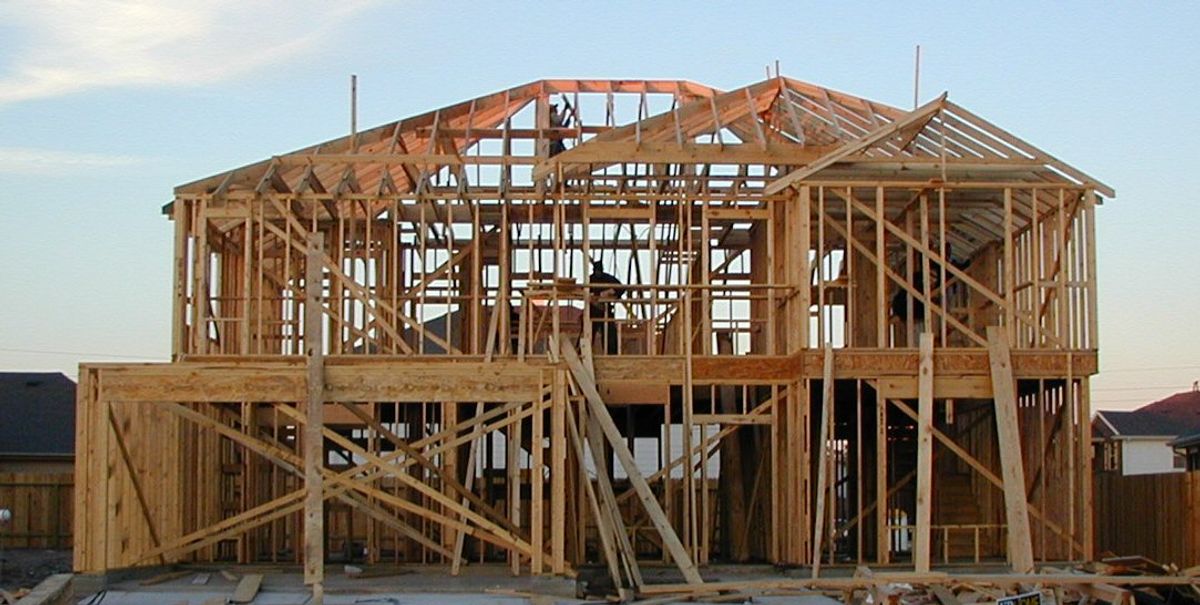In the world of steel frame construction, managing finances is a critical aspect of ensuring project success and sustainability of the business. Client payment delays can pose significant challenges, disrupting cash flow and potentially derailing projects. This article provides a comprehensive guide on how to handle such delays, offering insights into the causes, proactive strategies to mitigate risks, legal avenues for recourse, methods to maintain positive client relationships, and the use of technology to enhance payment efficiency.
Key Takeaways
- Understanding the root causes of payment delays, such as client financial issues, contractual ambiguities, and economic downturns, is essential for developing effective mitigation strategies.
- Proactive measures, including clear communication of payment terms, implementing structured payment schedules, and using escrow accounts, can significantly reduce the risk of payment delays.
- Legal options, like enforcing lien rights, engaging in mediation or arbitration, and considering litigation, provide avenues for recourse when facing unresolved payment issues.
- Maintaining a positive relationship with clients through negotiation, balancing assertiveness with understanding, and educating them about project financing is key to ensuring ongoing cooperation and future business.
- Leveraging technology through automated invoicing, online payment platforms, and real-time financial tracking can streamline the payment process, making it more efficient and transparent.
Understanding the Causes of Payment Delays
Assessing Client Financial Health
Before steel frames rise, financial foundations must be solid. Assessing a client’s financial health is crucial to foresee payment delays. Look for red flags in their credit history and current financial statements.
- Review recent financial reports
- Check credit scores and payment history
- Analyze cash flow for project feasibility
Timely assessment helps in identifying risks and taking preventive measures.
Understanding a client’s financial capacity ensures realistic expectations. It’s not just about the numbers; it’s about securing your business’s future.
Contractual Terms and Conditions
In the realm of steel frame construction, contractual clarity is paramount. A well-drafted contract acts as a safeguard against payment delays. It should outline all payment terms, including milestones, penalties for late payment, and conditions for final payment release.
Key elements to include in your contract:
- Detailed scope of work
- Payment milestones tied to project phases
- Late payment penalties
- Process for change orders
Ensure that both parties have a mutual understanding of the payment terms to prevent disputes.
Remember, a contract is more than a formality; it’s a tool for financial security. By setting clear expectations from the outset, you minimize the risk of payment delays and protect your business interests.
Economic Factors Affecting the Construction Industry
The construction industry’s pulse is tightly linked to the broader economy. Market volatility can lead to payment delays as clients grapple with fluctuating costs and uncertain financial forecasts. Key economic indicators such as interest rates, inflation, and GDP growth impact construction demand and, consequently, cash flow.
Recessions and downturns often result in tightened budgets and postponed projects, directly affecting payment timelines. It’s crucial to monitor these economic trends and prepare for their ripple effects:
- Stay informed on economic forecasts
- Adjust project timelines and budgets accordingly
- Build contingency plans for downturns
Proactive monitoring and adaptation to economic shifts can safeguard against payment delays.
Proactive Measures to Mitigate Payment Risks
Clear Communication and Payment Terms
Ensuring timely payments begins with clear communication. Before breaking ground, define payment terms that are understandable and acceptable to both parties. Transparency is key to avoiding misunderstandings and disputes.
- Establish a detailed contract outlining each payment milestone.
- Provide comprehensive breakdowns of costs and services.
- Set expectations for payment timelines and consequences for delays.
Payment terms should be fair, realistic, and enforceable to maintain trust and cooperation.
Regular updates and open lines of communication keep the client informed and accountable. By setting these standards early, you lay the groundwork for a smooth financial workflow throughout the project.
Implementing a Payment Schedule
A well-defined payment schedule is the backbone of financial stability in steel frame construction projects. Ensure timely payments by breaking down the project into milestones with associated costs. This approach not only clarifies expectations but also provides a roadmap for both parties.
Payment milestones should be agreed upon during the contract phase and documented meticulously. They serve as checkpoints that, once achieved, trigger the release of funds. Here’s an example of how to structure them:
- Initial deposit upon contract signing
- Progress payment after completion of the foundation
- Further payments following major phases like framing, roofing, and finishing
- Final payment upon project completion and client approval
Consistent follow-up on the payment schedule minimizes the risk of delays and ensures a steady cash flow. It’s a proactive step towards compliance and risk management in the construction process.
Remember, clear breach protocols must be in place. They protect your business if the client fails to adhere to the agreed terms. This is not just about enforcing penalties but also about maintaining a transparent relationship with your client.
Utilizing Escrow Accounts
Escrow accounts offer a secure bridge between payment promises and actual transactions. They protect both parties by holding funds until predefined conditions are met. For steel frame construction projects, this means financial security and peace of mind.
Escrow services can be particularly useful in large transactions or projects with extended timelines. By mitigating payment risks, they ensure that funds are available and allocated as agreed upon in the contract.
- Establish an escrow agreement early in the project planning phase.
- Define clear conditions for the release of funds.
- Choose a reputable escrow service provider.
Escrow accounts are not just a safety net; they’re a sign of professional trust and commitment.
Remember, while escrow accounts add a layer of protection, they should complement, not replace, clear contractual terms and proactive financial management.
Legal Recourse for Unresolved Payment Issues
Understanding Lien Rights
In the realm of steel frame construction, mechanic’s liens serve as a powerful tool for securing payment. A lien attaches a legal claim to the property until the outstanding debt is settled, ensuring that your work is not overlooked financially.
- Determine eligibility and lien deadlines early in the project.
- File the lien promptly if payment delays occur.
- Release the lien once payment is received to maintain trust.
Mechanic’s liens are not just a remedy but a deterrent. They signal to clients the seriousness of timely payment.
Understanding when and how to enforce a lien can be the difference between getting paid and absorbing a loss. It’s crucial to ensure clear payment terms from the outset and to utilize payment bonds and escrow accounts for added security.
The Role of Mediation and Arbitration
When payment disputes arise, mediation and arbitration are preferable alternatives to litigation. These methods foster a collaborative environment, aiming for a mutually beneficial resolution.
- Mediation involves a neutral third party who facilitates discussion and helps both parties reach an agreement.
- Arbitration, on the other hand, is a more formal process where an arbitrator makes a binding decision based on the evidence and arguments presented.
Both methods require clear communication and a solid understanding of legal principles to navigate effectively. They serve as a bridge to resolve conflicts without burning bridges.
Remember, the goal is to settle payment issues while preserving professional relationships. Choose the path that aligns with your business values and client rapport.
Pursuing Litigation: Pros and Cons
When all else fails, litigation may be the final step to resolve payment disputes. Going to court can be a powerful deterrent against future delays, ensuring clients take payment obligations seriously. However, it’s a path fraught with costs and uncertainties.
-
Pros:
- Enforces payment through legal judgment
- Deters future payment issues
- May recover full payment plus legal fees
-
Cons:
- Time-consuming and expensive
- Can damage client relationships
- Uncertain outcome
Litigation should be a last resort, used only when other methods fail. Prevent payment disputes with clear terms, flexible payment plans. File Mechanics Lien for non-payment. Demand letter for overdue payments. Pursue legal action for small amounts.
Maintaining Positive Client Relationships
Negotiation Strategies for Payment Terms
Negotiating payment terms requires a balance between firmness and understanding. Establish clear expectations from the outset, but remain open to flexible arrangements that accommodate the client’s financial situation.
- Begin with a realistic payment timeline that aligns with project milestones.
- Offer multiple payment options to cater to different client needs.
- Consider incentives for early payments to encourage promptness.
Flexibility in payment plans and settlement agreements is crucial. Formalizing these agreements is essential to avoid disputes and maintain positive relationships.
Remember, successful negotiation is about finding a win-win situation where both parties feel respected and valued.
Balancing Firmness with Flexibility
In the dance of client relations, firmness and flexibility must move in tandem. Establish clear payment terms at the outset, but be prepared to adapt to unforeseen circumstances.
- Recognize the importance of proactive communication.
- Document all agreements meticulously.
- Develop a toolkit of dispute resolution strategies.
Balancing firmness with flexibility is not about compromising your position, but about finding a path to success that works for both parties.
Remember, the goal is to maintain a healthy business relationship while ensuring financial success. Flexibility should not come at the cost of your company’s stability.
Client Education on Project Financing
Educating clients on the financial aspects of steel frame construction projects is essential for a smooth payment process. Knowledge empowers clients to understand the significance of timely payments and the impact of delays. Discussing the financing options and payment expectations upfront can prevent misunderstandings later on.
- Outline the cost breakdown of the project
- Explain the importance of cash flow for project continuity
- Highlight the consequences of delayed payments
By demystifying the costs and financial requirements, clients are more likely to adhere to payment schedules.
Ensure that clients are aware of the potential for late payment penalties, as this can incentivize prompt payment behavior. Regular updates on project progress and financial status can also help maintain transparency and trust.
Leveraging Technology for Payment Efficiency
Automated Invoicing Systems
In the realm of steel frame construction, automated invoicing systems are revolutionizing the way payments are managed. These systems facilitate prompt billing, reduce human error, and ensure a consistent cash flow.
Efficiency is the keyword when it comes to automated systems. They allow for electronic invoicing, automated reminders, and integration with online payment portals. This not only speeds up the payment process but also enhances client satisfaction by providing a seamless transaction experience.
- Streamlined invoicing process
- Automated payment reminders
- Easy tracking of outstanding payments
By automating the invoicing process, construction firms can focus more on project delivery and less on financial administration.
Adopting such technology is not just about keeping up with the times; it’s about staying ahead in a competitive industry. The benefits are clear: better cash flow management, reduced administrative burden, and a professional approach to billing.
Online Payment Platforms
In the digital age, steel frame construction businesses must adapt to the changing landscape of financial transactions. Online payment platforms offer a seamless and secure way to receive payments, reducing the time between invoicing and cash flow.
- Simplify the payment process for clients
- Minimize administrative overhead
- Enhance security with encrypted transactions
Embrace digital shift in billing with online payment platforms, automation, and technology for efficient payment collection.
By integrating these platforms, companies can track payments in real-time, offering transparency and accountability. This not only ensures financial stability but also fosters trust with clients, contributing to long-term business relationships.
Real-time Financial Tracking Tools
In the fast-paced world of steel frame construction, real-time financial tracking tools are indispensable. These tools provide instant visibility into the financial health of a project, enabling proactive management of cash flow and timely payments—a cornerstone of project success.
- Monitor project expenses and income as they happen
- Identify potential payment delays before they become critical
- Adjust financial forecasts with up-to-the-minute data
By leveraging the latest in financial technology, construction firms can stay ahead of the curve, ensuring that payment delays do not derail project timelines or budgets.
Real-time tracking also aligns with strategies for mitigating delayed payments, such as effective contractual terms and alternative financing. It’s a powerful component in a comprehensive approach to cash flow management.
In today’s fast-paced business environment, ensuring payment efficiency is crucial. At Debt Collectors International, we specialize in streamlining your collections process, making it simpler and more effective. Our expert collectors are ready to serve you with over 30 years of experience in commercial collection. Don’t let overdue payments disrupt your cash flow. Visit our website now to learn more about our services and how we can assist you in recovering what’s rightfully yours. Take the first step towards financial stability and enhanced payment efficiency with Debt Collectors International.
Frequently Asked Questions
What are common causes of payment delays in steel frame construction projects?
Payment delays can be caused by various factors including the client’s financial health, unclear or unfavorable contractual terms, and broader economic issues affecting the construction industry.
How can construction companies proactively reduce the risk of payment delays?
Companies can mitigate payment risks by establishing clear communication and payment terms, setting up a structured payment schedule, and using escrow accounts to secure funds.
What legal actions can be taken if a client fails to make timely payments?
Construction companies can exercise lien rights, engage in mediation or arbitration, or pursue litigation as a last resort to resolve payment issues.
How can firms maintain a good relationship with clients despite payment issues?
Maintaining a positive relationship involves negotiating payment terms effectively, being both firm yet flexible when needed, and educating clients on project financing.
What role does technology play in improving payment efficiency in construction?
Technology enhances payment efficiency through automated invoicing systems, online payment platforms, and real-time financial tracking tools that streamline the payment process.
Is it important to assess a client’s financial health before taking on a construction project?
Yes, assessing a client’s financial health is crucial as it helps in anticipating potential payment delays and allows for better preparation in managing cash flow and project financing.





